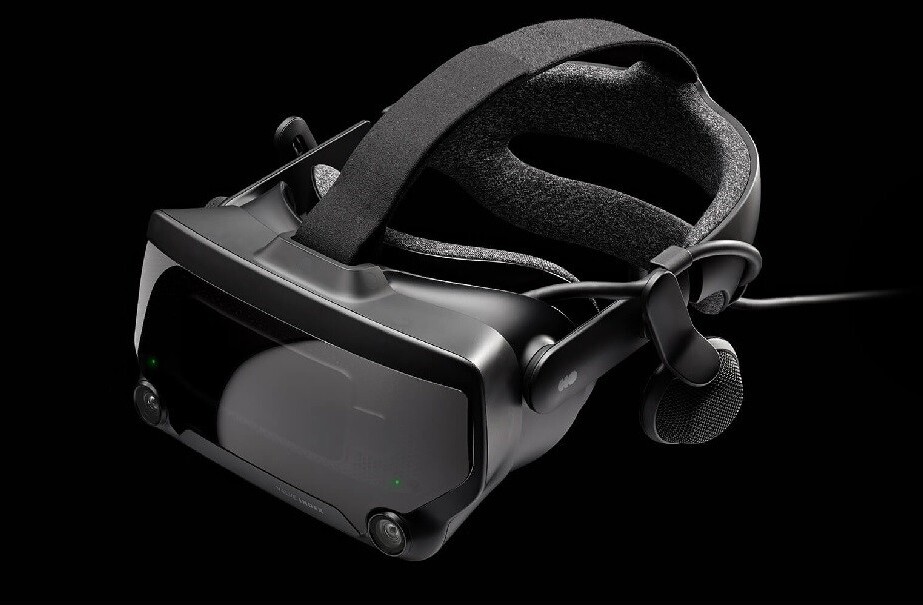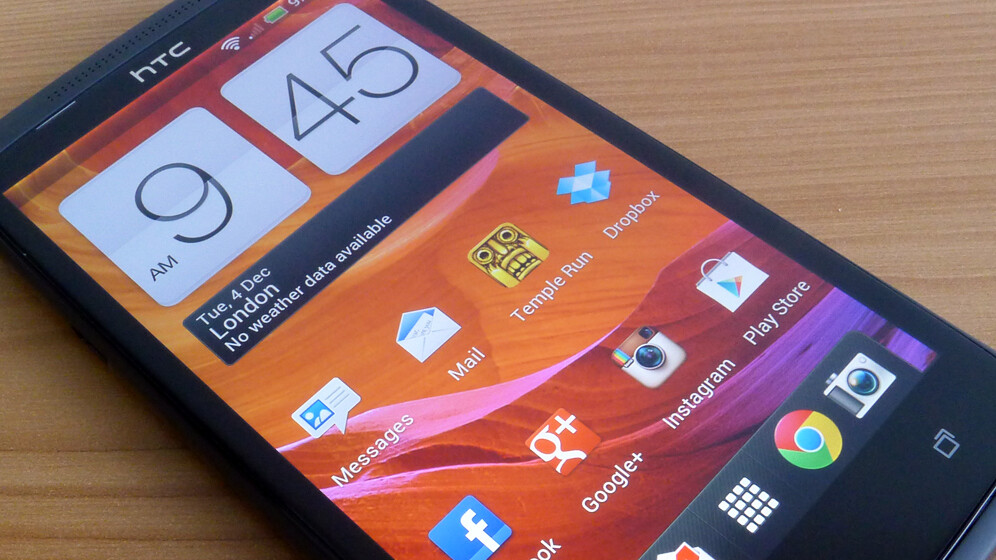
The One series was a breath of fresh air for HTC. By stripping away much of the clutter associated with its smartphone range, it meant each of the company’s three new handsets had a clear sense of place and purpose. For the first time in years, it also meant that consumers could instantly recognize what its flagship handset was: the One X.
The device has been on the market since April though. Since then we’ve seen a couple of new premium Android handsets enter the fray, such as the highly anticipated Nexus 4 and the Samsung Galaxy Note II. In this time frame the One X has been refreshed as the One X+, adding an updated version of the Android OS (version 4.1.1), increased storage and LTE capabilities.
When the new 4G network, EE, was unveiled for the UK, it was only a matter of time before some new LTE-enabled devices were rolled out across the country. One of these is the One XL, the new top tier device from HTC that sits somewhere alongside the One X+. While it shares many similarities with the latter, there are also a couple of notable differences, such as its dual-core processor, reduced storage options and smaller battery.
We took the chance to put the One XL through its paces on a 4G SIM card provided by EE. While it’s still a very formidable smartphone, the restricted hardware specifications may feel like a missed opportunity in light of other handsets available to 4G customers. Does it make that much of a difference? Or has HTC’s premium smartphone aged too much already?
Design
When you pick up the One XL, it still feels like a premium piece of hardware. While it’s frustrating to not be able to instantly rip into the back of the smartphone and remove the battery, the machined polycarbonate unibody gives the One XL a far superior build quality and finish. The all-in-one casing also means that it’s feels quite stiff and rigid, offering little flex if you apply pressure to the corners of the device.
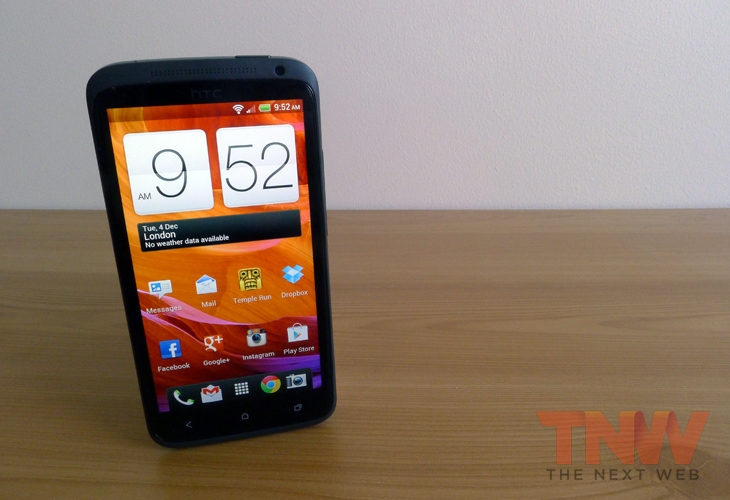
Make no mistake, this is a lovely smartphone to hold. Just like the One X before it, the charcoal color scheme and matte texture are both great design choices, as it means the smartphone is both grippy in the hand and unlikely to pick up scratches and marks. While the glass backing used on the Nexus 4 is prone to cracks, similar problems with the One X are few and far between.
The camera on the back is pretty unassuming, unlike the Desire X, although the way it protrudes from the back of the device may irk some users. Regardless of your preference, when you look at the device in profile you will notice that it has a slight curve to it, which all but conceals the bulge of the camera when you lay it down on a flat surface.
There’s no way of hiding it. The One XL is a pretty large device, due in no small part to the 4.7-inch Super LCD display that’s capable of spitting out games and videos in 720p. Aside from the Samsung Galaxy Note II and Galaxy S III, you’ll really going to struggle to find a handset that feels so dominant in the hand.
In everyday use though, it’s perfectly usable. If you’re holding it with one hand you might struggle to tap anything in the top right-hand corner, however, it’s surprisingly easy to just adjust your grip on the device and sidestep this problem.
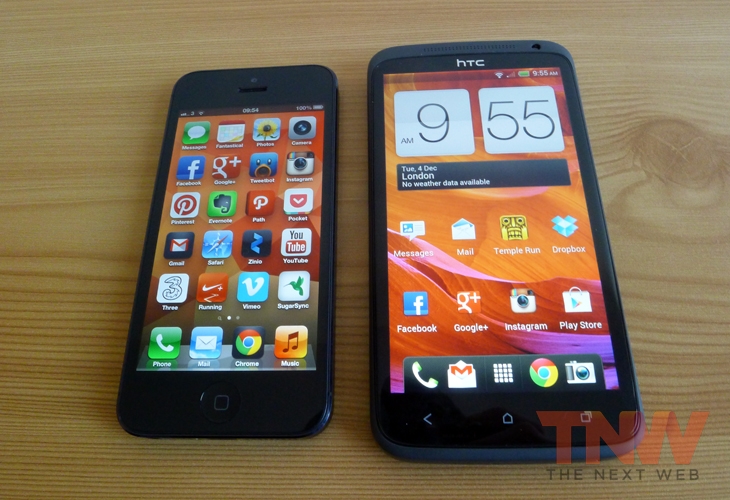
The One XL has a beautiful display when you turn up the brightness to its highest setting. The colors are incredibly vibrant and both the contrast and tonal range are pretty much flawless. It might be the same screen used in the original One X, but it’s still a market leader and can go toe-to-toe with the retina display found in the iPhone 5.
Under the hood, HTC has chosen to go with Qualcomm’s dual-core Snapdragon S4 MSM8960 processor. Now on paper, that choice looks like a step down from the 1.5GHz quad-core Nvidia Tegra 3 used in the One X. So why do it? According to reports, in the past it wasn’t possible to pick up a 4G signal using Nvidia’s quad-core chip. However, the new LTE version of the One X+ uses the Tegra 3, which perhaps points to a problem in the way the 4G networks have been setup outside of the United States.
To get into the technicalities briefly, the Snapdragon S4 uses Qualcomm’s new Krait CPU cores, giving it better per-core performance than the standard ARM Cortex-A9 cores found in the Tegra 3. It means that for general smartphone tasks you will see a similar, if not better performance from the One XL. However, for any app that takes advantage of multiple cores, the original One X or One X+ should deliver better results.
In everyday use though, the two processors perform very similarly. That may change in the future as more Android apps start taking advantage of quad-core processors, but for now it’s very much a case of six of one, half a dozen of the other.
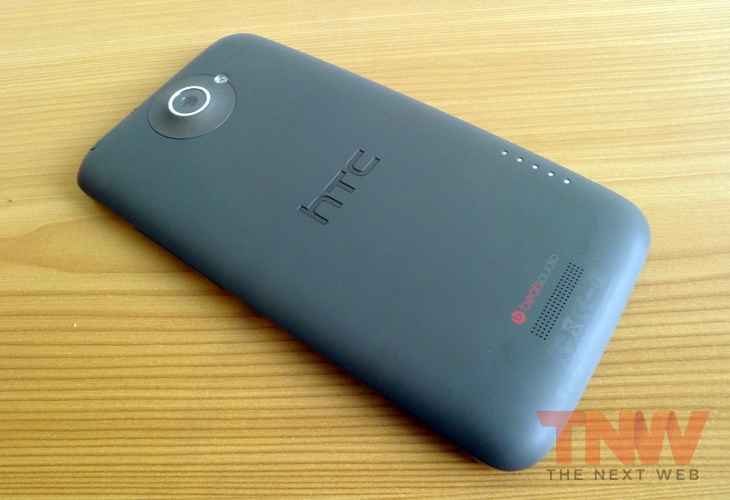
The One XL comes with 32GB of built-in storage, although like its predecessor there is no support for expandable memory. It’s an odd choice that sets it apart from one of its fiercest rivals, the Samsung Galaxy SIII, although the option to use up to 25GB of free Dropbox storage is a nice caveat. It’s also worth noting that the updated One X+ comes with 64GB of internal storage; why this wasn’t included in the One XL as well is unclear.
Software
The One XL runs version 4.0.4 of Android, more commonly known as Ice Cream Sandwich, with HTC Sense 4.1 slapped on top of it. The latter is a great direction for HTC, who has made a real effort to dial back some of the most jarring and unnecessary aspects of its interface.
The ring lock screen remains, allowing you to go straight into an app before you even hit the home screen. It’s particularly useful for launching the camera app when something happens quickly or spontaneously, as well as those everyday tasks that require only a momentary glance, such as the default Calendar or Google Search apps.
The customizable dock on the home screen is another welcome feature, mimicking the four-app selection on iOS and other Android launchers. While it’s not groundbreaking in itself, the fact that it’s available straight out of the box is a positive step for new or more casual users, and also helps HTC to differentiate itself from other Android handset manufacturers.
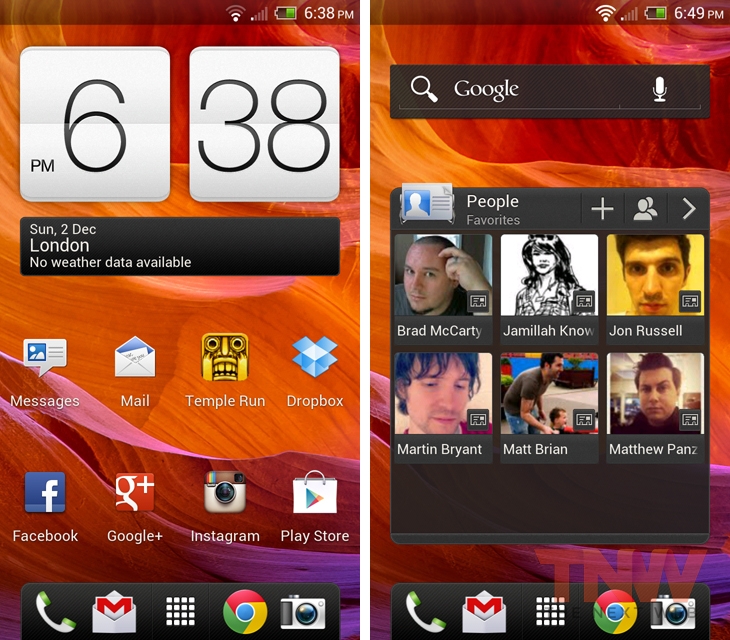
Of course, the HTC flip-clock is also still available, sporting a much cleaner typeface and more natural animations. It might just be a widget, but given how many Android users choose not to remove it from their home screen, it has quickly cemented itself as something of a calling card for HTC Sense.
Unlike the Desire X, the One XL has chosen to carry on with its Windows 7 style app switcher, which can be accessed with a simple tap of the far-right touch key. The entire experience feels outdated though, prioritizing flashy visuals over productivity or ease of use. It also uses only a small proportion of the One XL’s gorgeous screen, which feels like a bit of a missed opportunity. Why HTC chose to implement this after stripping it out of the Desire X is, again, rather unclear. It’s perfectly usable, but we would like to see the company come up with something a little more consistent with the rest of the Android operating system next time.
Navigating through the various home screens, settings and app folders is a dream though. All of the transitions are incredibly smooth and the One XL’s vibrant display makes everything look a great deal better than other smartphones in its class. With the brightness cranked all the way up, the general pixel density and color reproduction is astonishing, making visual apps such as Instagram or Vimeo a real pleasure to browse.
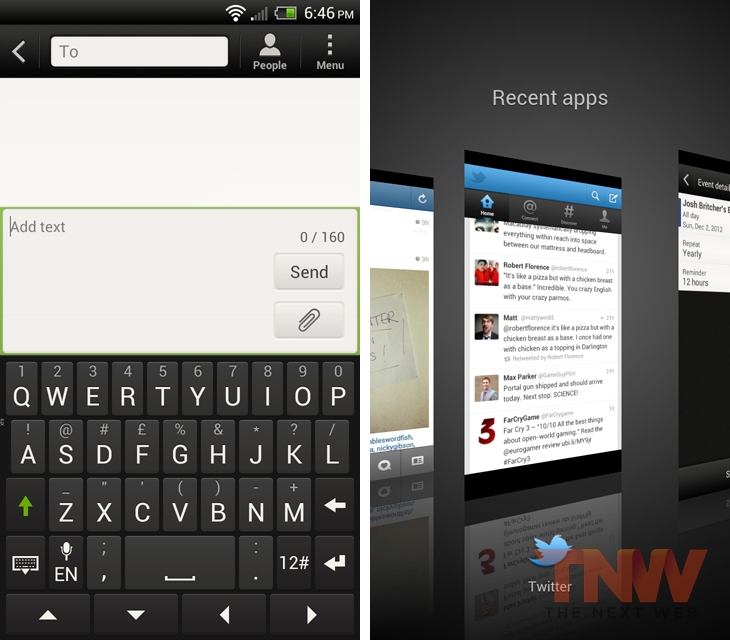
The keyboard implemented by HTC is an interesting design choice. The individual keys are much larger than those offered by the stock Android keyboard, making it much easier to avoid spelling mistakes and type at a snappier pace. The downside is that on most apps, such as HTC’s Messages app, it takes up more than half the screen. Part of the problem is the directional arrows underneath, which bumps everything up by a noticeable amount. Coupled with the rather large text box, it means that you have to constantly hide the keyboard if you want to see more than a single message from your chat history.
The Gallery apps is also pretty underwhelming, as it hides all of your images behind an album thumbnail which is simply too small.
All of these issues can, of course, be alleviated by downloading third-party alternatives. It might take a little time, but one you’re done the One XL is a pretty flawless Android device. The problem, however, is that users shouldn’t have to do this in the first place. If HTC could build some compelling and useful in-house apps, it would not only make for a better smartphone, but also encourage more consumers to switch over due to its inherent exclusivity.
Reception
The One XL is an LTE-enabled device, which means that it can take advantage of the 4G network currently being rolled out by EE. To see how its reception fares, we carried out some speed tests with the device in and around London. Below are the results (in kbps), compared to an iPhone on the Three network:
The 02
One XL: 5838 (Down)/ 3062 (Up)
iPhone 5: 1093 (Down)/ 1725 (Up)
Oxford Street
One XL: 1365 (Down)/ 12794 (Up)
iPhone 5: 724 (Down)/ 142 (Up)
St. James Park
One XL: 2481 (Down)/ 4984 (Up)
iPhone 5: 5545 (Down)/ 731 (Up)
Trafalgar Square
One XL: 893 (Down)/ 5406 (Up)
iPhone 5: 1756 (Down)/ 2359 (Up)
Of course, it’s hard to draw too many conclusions from these results. Internet connectivity will differ both because of the device itself and the network that it’s drawing from.
Generally though the One XL performs very well. Uploading pictures to Instagram takes but a few moments, while browsing the Internet is almost instantaneous. Sure, if you make an effort to go off the beaten track the device will start to suffer, switching back to 3G connectivity or worse. However, these moments are few and far between, making it a pretty reliable and robust 4G smartphone.
Camera
HTC has put a lot of effort into revamping the camera and corresponding software built into its devices. The original One X was a huge leap forward, offering an 8 megapixel shooter on the back and a much more modest 1.3 megapixel camera on the front. Thankfully, it’s the exact same offering here in the One XL.
From a purely hardware standpoint, the rear-facing camera in the One X (which everyone uses to take 90 percent of their photos and videos, lets be honest) is a robust slice of glass. The sensor used by HTC has been known to produce some slightly desaturated and soft images in the past, and unfortunately some of those problems are still evident in the One XL. However, there are noticeable improvements across the board, and while it can’t be compared with the sensor in the iPhone 5, the gap is closing fast.
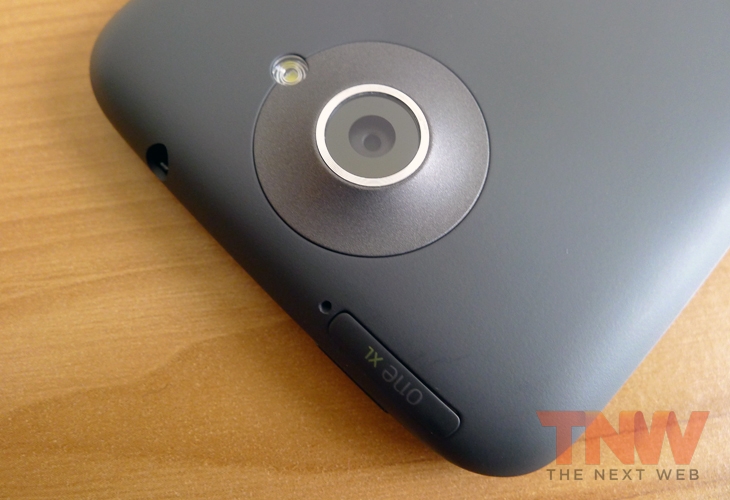
HTC’s camera app, however, has undergone some massive improvements in Sense 4.1. Combining both the photo and video modes in a single app is great, and switching between the two is much faster than on iOS. Part of this is due to the small sliding lock used on the iPhone’s camera app, but also because on the One XL, the device automatically starts recording either video or photos once you switch between the two.
Also, the device has practically no shutter lag, making it an ideal device for capturing those ‘spur of the moment’ images when you’re out and about. If you hold the shutter button down, the camera will also string together consecutive shots in burst mode. It’s surprisingly fast and allows you to choose and save the best image from literally dozens of files. It’s a great way of capturing fast-moving subjects, but also helps reinforce the device’s image as an alternative camera for professional snappers.
Photo Samples



Video Sample
Battery Life
The HTC One XL has a pretty beefy 1,800 mAh rechargeable battery, although it’s not replaceable due to the fixed body surrounding the smartphone. It’s the same one found in the HTC One X, although the added strain of processing LTE data means that on a 4G connection, a full charge doesn’t last quite as long.
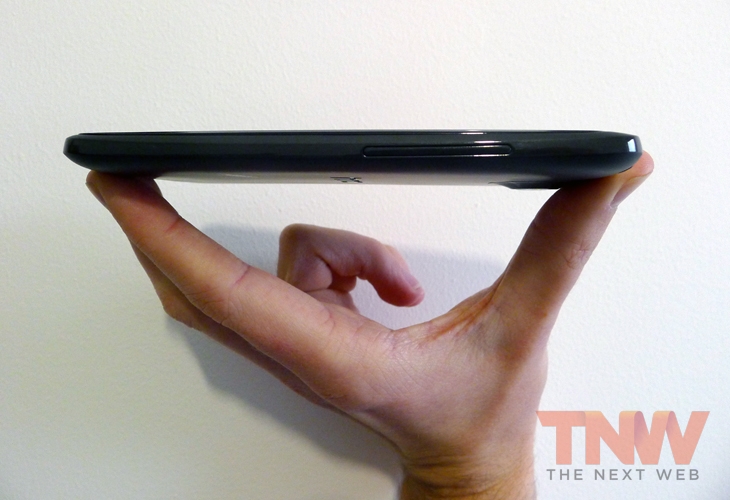
The caveat, however, is the Qualcomm Snapdragon S4 MSM8960 processor that HTC chose to pack into the device. It’s a dual-core chip, which means it consumes less power than the quad-core Nvidia Tegra 3. Or that’s the theory, anyway.
In reality, HTC’s choice of processor isn’t quite enough to counteract the extra heft caused by 4G connectivity. Even after a full charge, the device only lasts about half a day if you’re regularly playing around with apps, and keep both the WiFi and cellular data services switched on. That’s simply not good enough for a smartphone at this price point.
It’s quite possible to extend the battery life by closing apps as soon as you’re finished with them, reducing the screen brightness and keeping the volume of the built-in speakers to a minimum. With a conservative approach it’s possible to keep the One XL alive for a full day, but let’s be honest, this sort of workaround is hardly ideal. Best to keep that charger in your bag, just in case.
Conclusions
The One X is still one of the best smartphones released this year. HTC has decided to keep it simple with the One XL, changing what is only absolutely necessary to get it running on EE’s new 4G network. As a result, it still performs admirably in day-to-day use, standing out with it’s luscious display and thoughtful design.
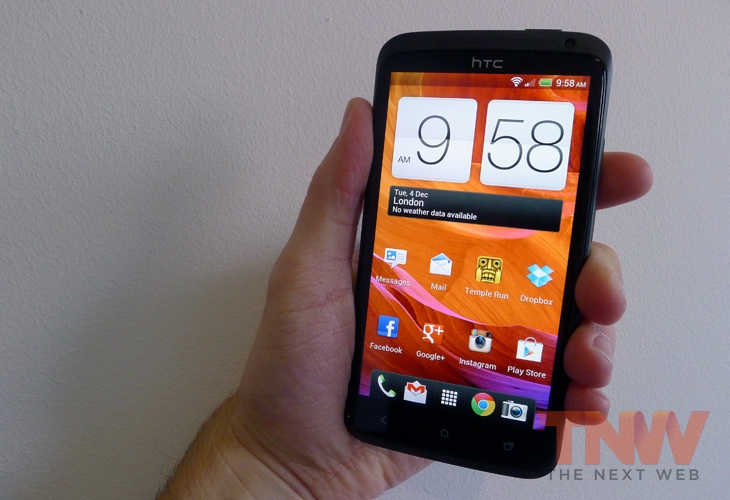
The problems with the One X haven’t been rectified though. The camera is still a good step behind the iPhone 5, and the battery life suffers despite the intelligent processor choice. Compared with the One X+, it’s frustrating to see that possible improvements to the storage, battery life and operating system (the One X+ now runs Jelly Bean) have been excluded.
Despite this bag of minor issues, the One XL still stands as one of the best Android devices out on the market. HTC continue to move in the right direction, with a good focus on the fundamentals and some clever features in its standout camera app. If you’re interested in jumping to a 4G data plan in particular, it’s now a straight up choice between this, the iPhone 5 and the Samsung Galaxy SIII.
Get the TNW newsletter
Get the most important tech news in your inbox each week.




